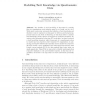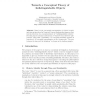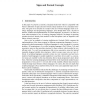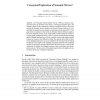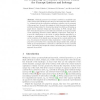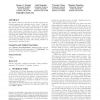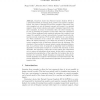ICFCA
2004
Springer
14 years 6 months ago
2004
Springer
The transfer of tacit knowledge is important in ensuring that an organisations most valuable assets do not walk out the door. While much controversy surrounds the definition of ta...
ICFCA
2004
Springer
14 years 6 months ago
2004
Springer
Based on the conceptual representation of objects in space and time as introduced in Temporal Concept Analysis first steps are done into the direction of a conceptual theory of �...
ICFCA
2004
Springer
14 years 6 months ago
2004
Springer
ICFCA
2005
Springer
14 years 6 months ago
2005
Springer
ICFCA
2005
Springer
14 years 6 months ago
2005
Springer
Abstract. The “Semantic Mirrors Method” (Dyvik, 1998) is a means for automatic derivation of thesaurus entries from a word-aligned parallel corpus. The method is based on the c...
ICFCA
2005
Springer
14 years 6 months ago
2005
Springer
Minimal generators (or mingen) constitute a remarkable part of the closure space landscape since they are the antipodes of the closures, i.e., minimal sets in the underlying equiva...
ICFCA
2005
Springer
14 years 6 months ago
2005
Springer
A key difficulty in the maintenance and evolution of complex software systems is to recognize and understand the implicit dependencies that define contracts that must be respecte...
SIGCSE
2006
ACM
14 years 6 months ago
2006
ACM
We present a hands-on approach to problem solving in the formal languages and automata theory course. Using the tool JFLAP, students can solve a wide range of problems that are te...
ICFCA
2007
Springer
14 years 7 months ago
2007
Springer
ICFCA
2007
Springer
14 years 7 months ago
2007
Springer
Kuznetsov shows that Formal Concept Analysis (FCA) is a natural framework for learning from positive and negative examples. Indeed, the results of learning from positive examples (...
